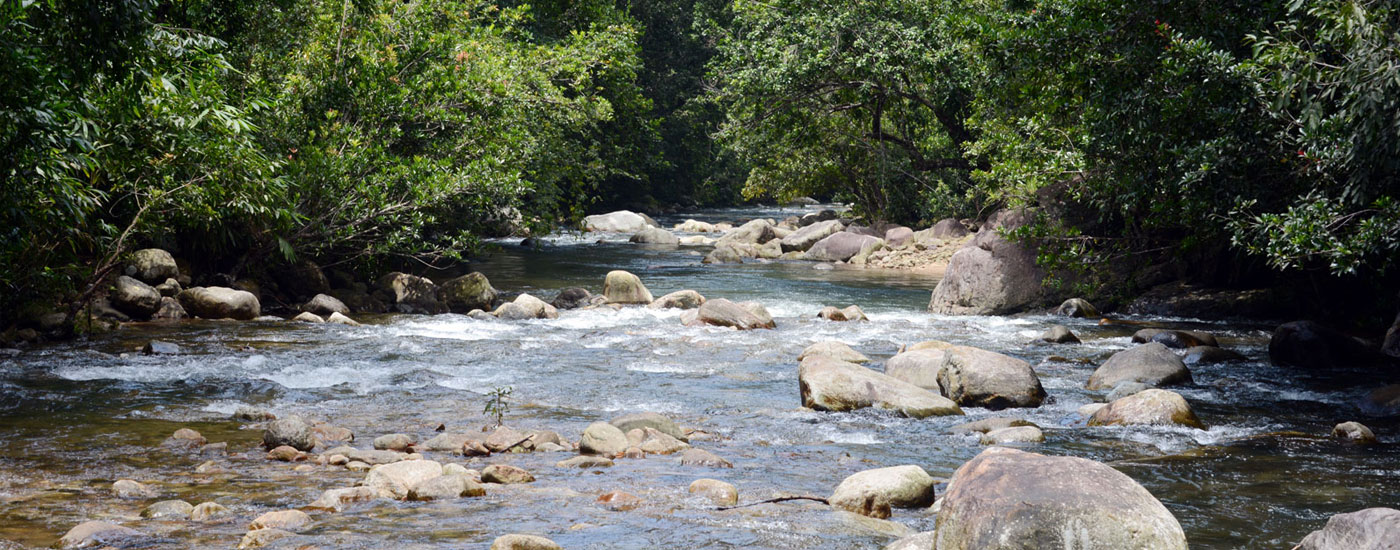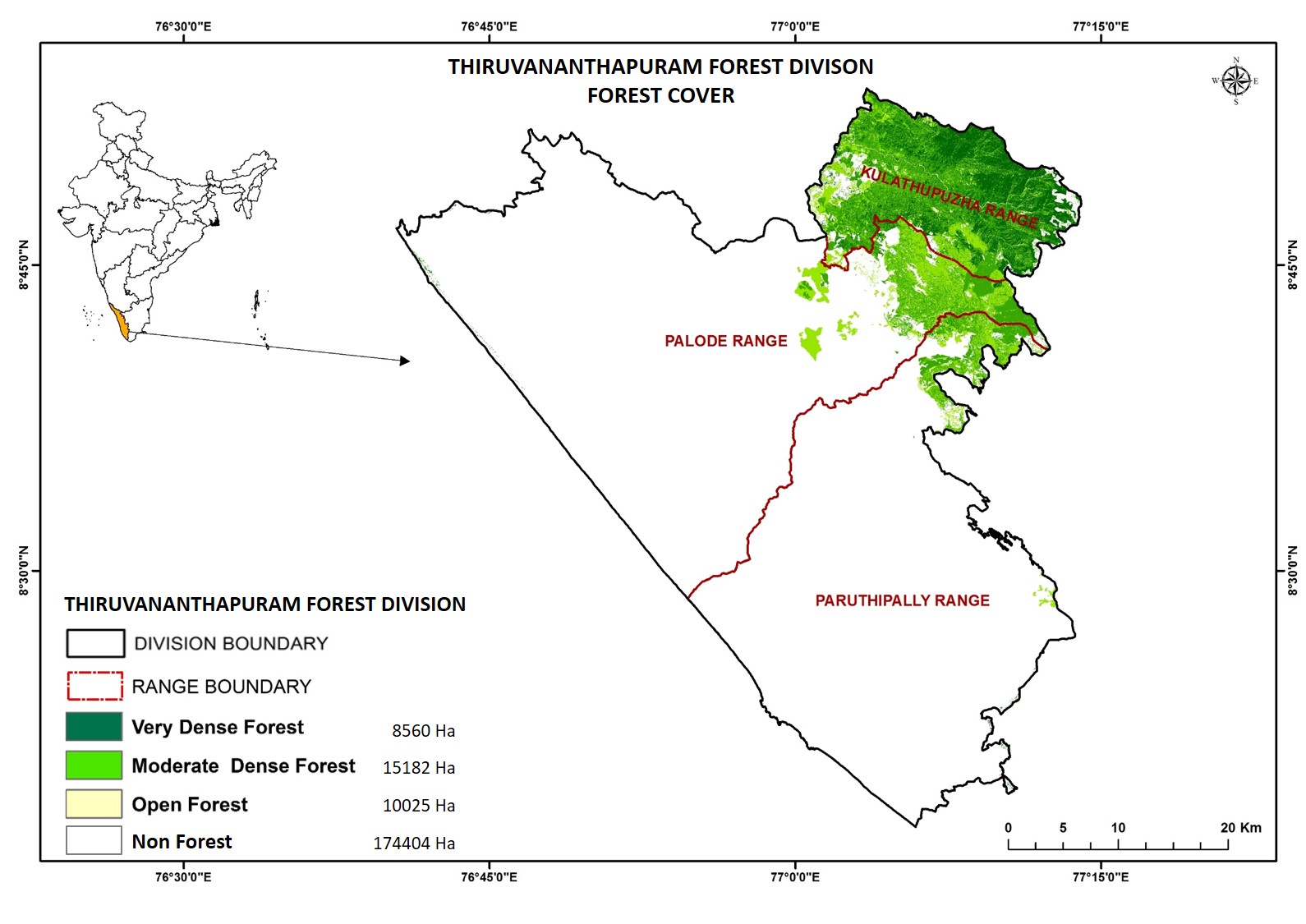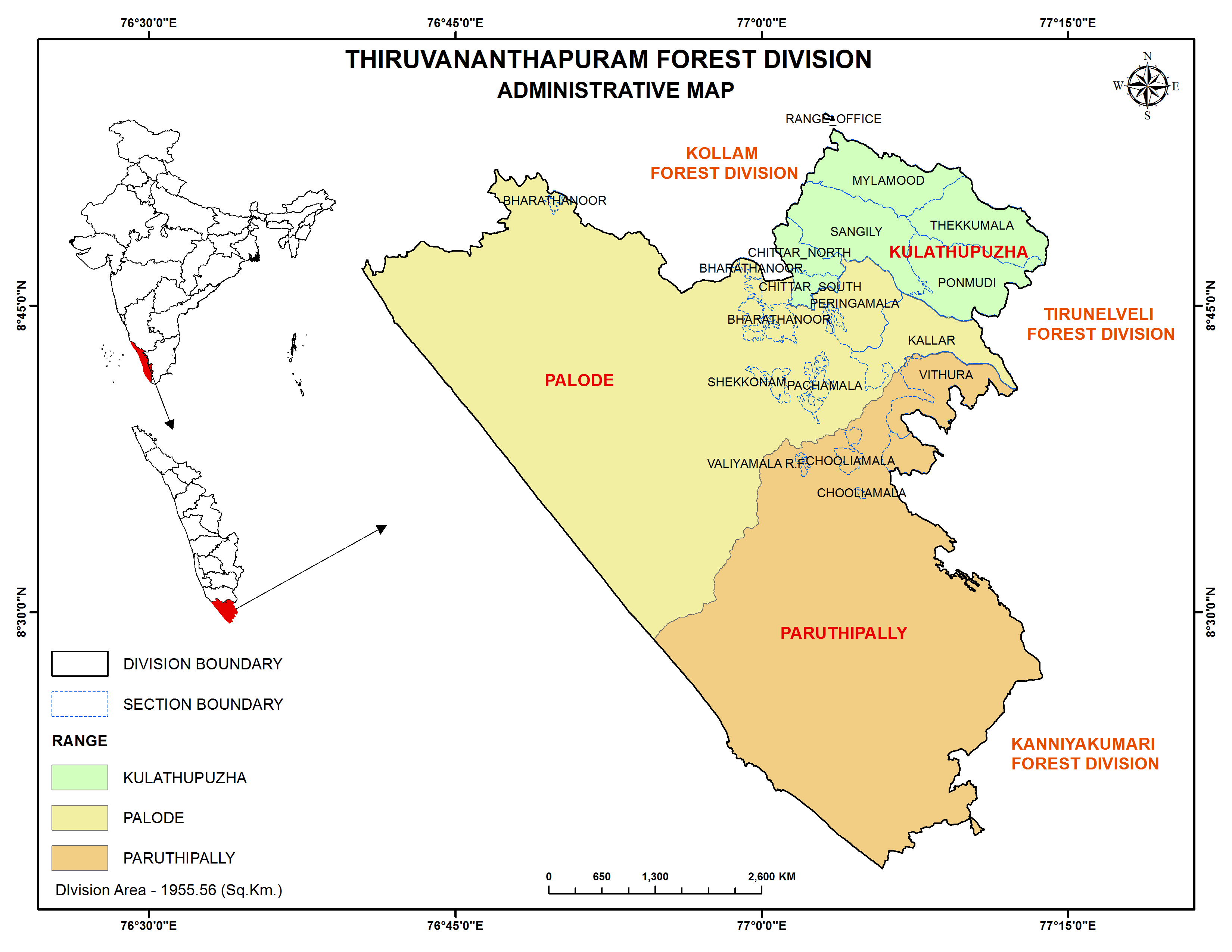
Significance of the landscape
The Thiruvananthapuram landscape at the southern tip of Kerala encompasses two divisions: Thiruvananthapuram Territorial (TTR) and Thiruvananthapuram Wildlife (TWL) divisions with the State Forest Department headquarters in the city of Thiruvananthapuram. Although the landscape is densely populated, the area is rich in biodiversity, both terrestrial and aquatic. With picturesque undulating terrain and water bodies, it is ideal for ecotourism. Though there is existing ecotourism infrastructure, there is room for much more. The communities utilize the natural resources for both subsistence and commercial purposes. Vanasree, a community-owned enterprise, produces and sells value-added forest products through a chain of retail outlets.
The landscape includes 108 sacred groves primarily located in the lowland and midland regions. Most of the groves are associated with temples, while some of them are privately held. The Karamana and Neyyar are the two major rivers crossing the landscape, originating from Chemunji Mottai and Agasthyarkoodam mountains in the Western Ghats.
The river basins exhibit major land use and land cover change with encroachments along flood plains and within riverbeds, indiscriminate dumping of waste and sewage, and construction of buildings and houses right up to the river front, negatively impacting fluvial function. The major reservoirs of Aruvikara, Peppara, Karamana, and the Neyyar Dam on the Neyyar River cater to the water supply of Thiruvananthapuram and the adjoining areas. The Peppara Reservoir is the main water source for Thiruvananthapuram City, and the Neyyar Reservoir is the main source of water for five other Gram Panchayats in the landscape. The watershed of both these reservoirs falls within the TWL division. The reservoirs’ capacities are decreasing due to increased siltation caused by degradation of the hill slopes surrounding the reservoirs.

Forest Cover

Administrative Map
Ecosystem Services in Thiruvananthapuram
- Provisioning Services:The Thiruvananthapuram landscape accounts for diverse NTFPs collected and used by communities for food, medicine, and commercial purposes. There are at present 41 collection centers and 11 value addition centers located in the state’s forest areas that are linked to the state-run Vanasree Initiative.
- Regulating Services: The forest aids in air quality and climate regulation, water flow regulation, and natural hazard regulation. Carbon sequestration is also an important regulating service.
- Cultural Services: Thiruvananthapuram has seven ecotourism destinations visited by about 840,000 people annually. The sacred groves and temples together provide cultural services, beyond their intrinsic aesthetic value, to locals and tourists.
- Supporting Services: The landscape provides supporting services through nutrient cycling, soil formation, primary production, and habitat services.
Thiruvananthapuram Forest Division (Forest Cover)

Thiruvananthapuram Forest Division (Administrative Map)


